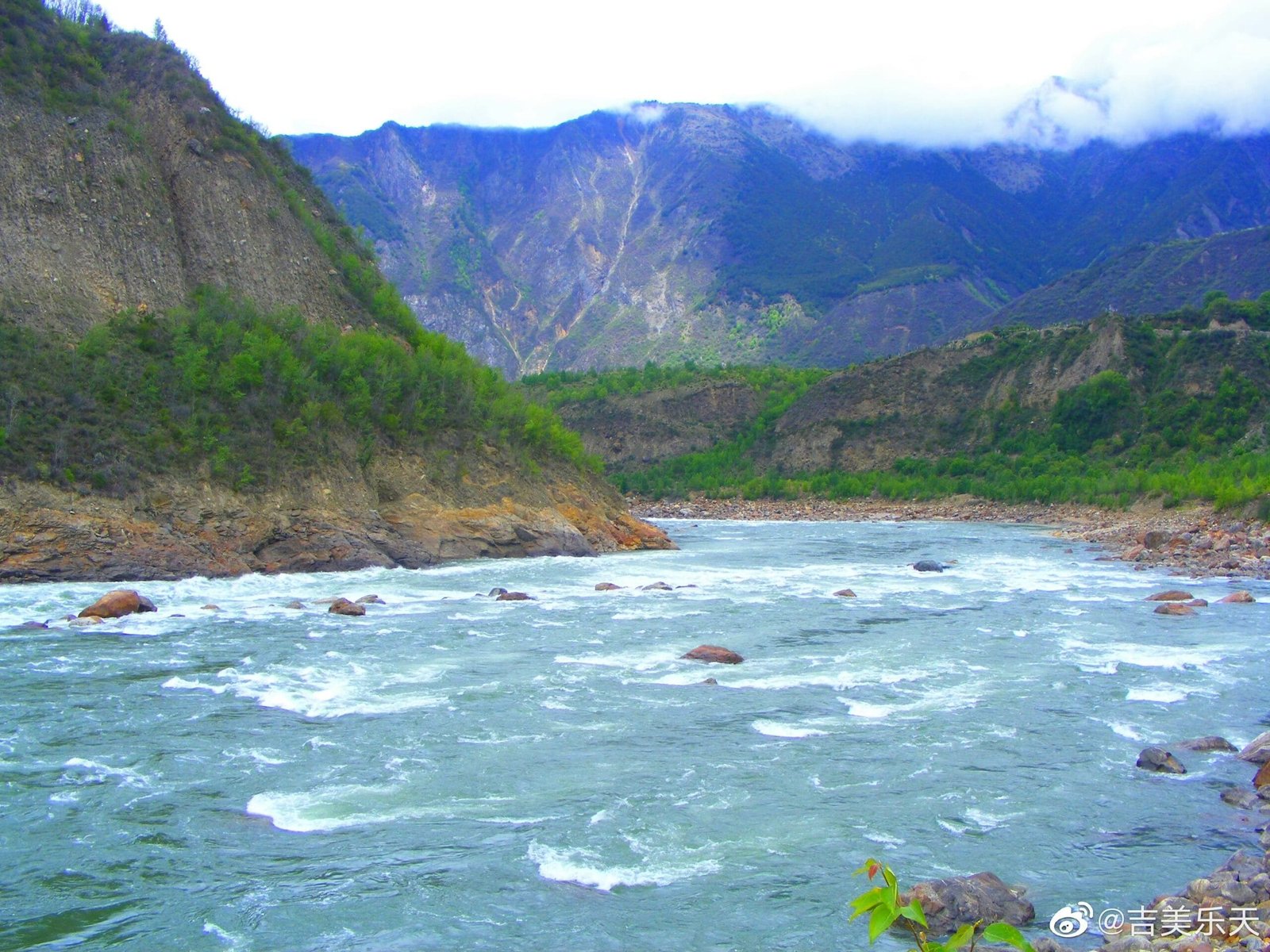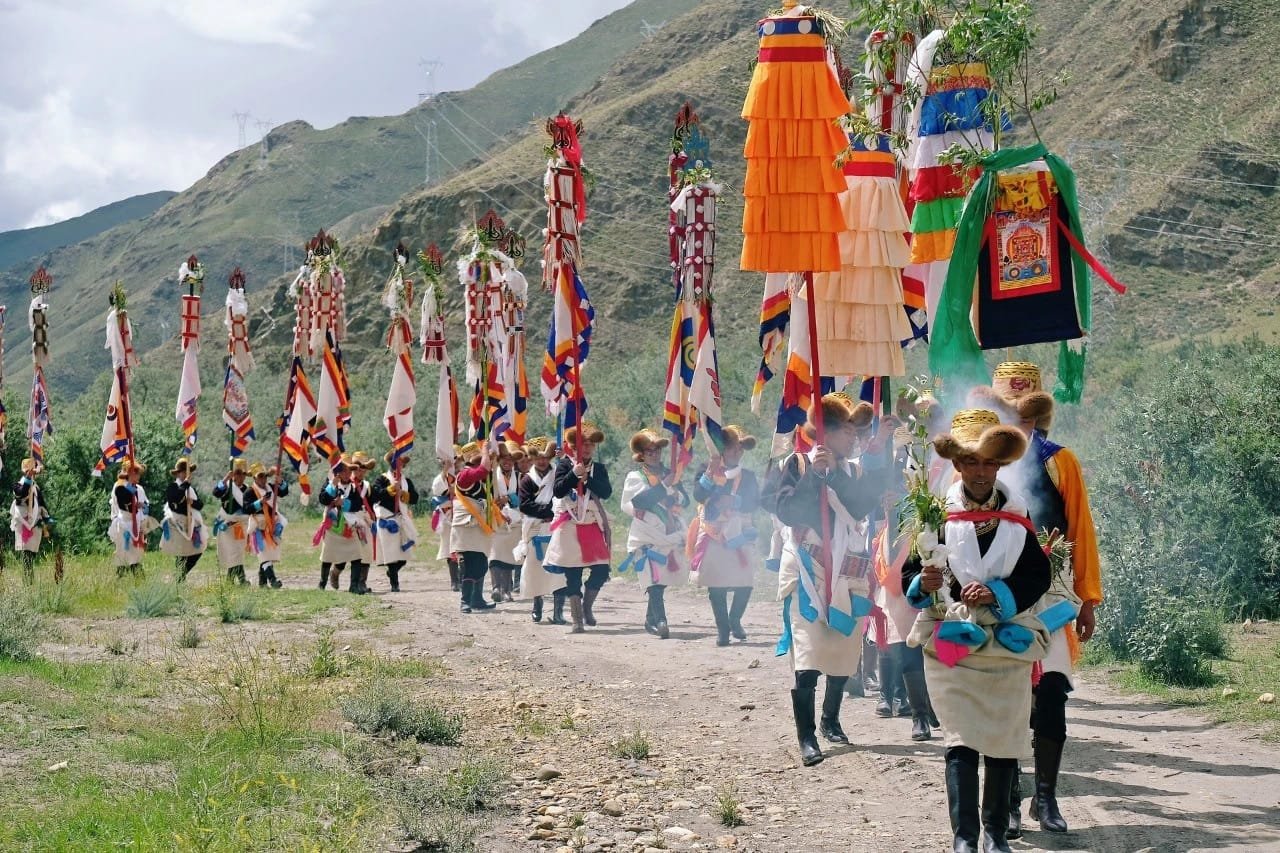The Dolma Nangtso River (卓玛朗措曲), meaning “Mother Tara’s Superior Lake River,” is a sacred waterway flowing through Lhorong County, Tibet, west of the county seat. As a tributary of the Gyalmo Ngulchu (Salween River), one of the major rivers in the region, it plays a crucial role in the local ecosystem, economy, and Tibetan spiritual traditions. Named after Mother Tara, the revered deity of compassion in Tibetan Buddhism, the river holds deep religious significance, attracting both pilgrims and nature enthusiasts alike.
Geographical Features of Dolma Nangtso River
Situated in the western part of Lhorong County, the Dolma Nangtso River originates from high-altitude lakes and carves its way through the breathtaking Tibetan Plateau. As a tributary of the Salween River, one of Asia’s longest and most important waterways, it contributes significantly to the region’s hydrology.
- Location: Western Lhorong County, Tibet
- Tributary of: Gyalmo Ngulchu (Salween River)
- Elevation: Originates from high-altitude glacial lakes, sustaining local ecosystems and communities
- Spiritual Significance: Named after Mother Tara, symbolizing divine protection and compassion
Ecological and Environmental Importance
The Dolma Nangtso River basin is a rich ecological zone, supporting diverse flora and fauna while playing a crucial role in maintaining the region’s environmental balance.
Tibet Luolong Zhuomalangcuo National Wetland Park, located in Luolong County, Tibet Autonomous Region, spans 3,263.71 hectares and features diverse wetland ecosystems. These include lake wetlands, river wetlands, swamp wetlands, permanent freshwater lakes, rivers, floodplain wetlands, herbaceous swamps, swamp meadows, shrub swamps, and forest swamps.
On December 25, 2019, the park successfully passed the National Forestry and Grassland Administration’s pilot acceptance test, officially earning the designation of a “National Wetland Park.”
Flora and Fauna
- Flora: The river is surrounded by dense alpine forests and meadows, home to unique plant species, including medicinal herbs used in Tibetan traditional medicine.
- Fauna: The river sustains various aquatic species, including:
- Naked Belly Loach (裸腹重唇鱼) – A rare fish species vital to the local aquatic food chain
- Splendid Fish (裂腹鱼) – A key part of the region’s biodiversity
- The river’s ecosystem also supports wild yaks, Tibetan antelopes, snow leopards, and migratory birds, making it an important conservation area.
Animal and Plant Resources
Lhorong County (ལྷོ་རོང་རྫོང ) boasts a vast landscape with rich natural vegetation, providing an ideal habitat for diverse wildlife. The region is home to a variety of wild animals, including snow leopards, leopards, macaques, Fritillary chickens, wolves, lynxes, leopard cats, musk deer, red deer, blue sheep, spoon chickens, white-eared pheasants, brown bears, wild yaks, and foxes.
Additionally, the area is renowned for its valuable Tibetan medicinal herbs, such as Cordyceps sinensis, Fritillaria scabra, snow lotus, Coptis chinensis, and rhubarb, which are widely used in traditional Chinese and Tibetan medicine.
Water Source and Sustainability
The river serves as a lifeline for local communities, providing freshwater for drinking, irrigation, and livestock. Its waters nourish farmlands and sustain traditional Tibetan agriculture, ensuring food security in remote villages. Sustainable conservation efforts are essential to protect this pristine natural resource from environmental threats.
Cultural and Economic Significance
The Dolma Nangtso River is deeply embedded in Tibetan culture and Buddhist traditions, making it a site of spiritual devotion and economic sustenance.
Spiritual Connection
- A Sacred Waterway: Tibetan Buddhists believe that the river carries the blessings of Mother Tara, making it a site for rituals, prayers, and religious offerings.
- Pilgrimage Destination: Many devotees undertake sacred circumambulations (kora) around the river, seeking spiritual purification and blessings.
Across the sacred land of Tibet, the twenty-one Taras are revered as the most beautiful, kind, and benevolent goddesses—divine protectors who appear in times of greatest need. When suffering arises, they bring comfort to the lonely, wealth to the impoverished, nourishment to the hungry, warmth to the freezing, healing to the sick, and hope to the despairing.
Each year, Tibetan pilgrims circumambulate the sacred lakes, prostrating every three steps with unwavering devotion, carrying their deepest prayers and aspirations. It is believed that the lake, like a divine mirror, reflects their wishes, revealing sacred images, Buddhist visions, and mystical mirages. Drinking its pure waters is said to rejuvenate the body and uplift the spirit. To the faithful, these lakes are not just bodies of water—they are manifestations of the divine, the very essence of Green Tara’s blessings. The pilgrimage around them is a journey of reverence, a sacred act of devotion, and a testament to the unwavering faith in the compassionate mother of all Buddhas.
Local Economy and Livelihoods
- Traditional Livelihoods: The river supports farming, livestock herding, and fishing, essential to the survival of Tibetan communities.
- Tourism and Eco-Tourism: Its scenic landscapes, cultural significance, and pristine waters attract pilgrims, trekkers, and eco-tourists, boosting local tourism revenue.
Conclusion
The Dolma Nangtso River is more than just a tributary of the Gyalmo Ngulchu (Salween River)—it is a spiritual sanctuary, an ecological treasure, and a vital water source for Tibetan communities. Its rich biodiversity, cultural heritage, and religious significance make it an irreplaceable part of Tibet’s natural and spiritual landscape. Preserving this sacred river ensures that future generations can continue to benefit from its life-giving waters, ecological wealth, and divine blessings.









